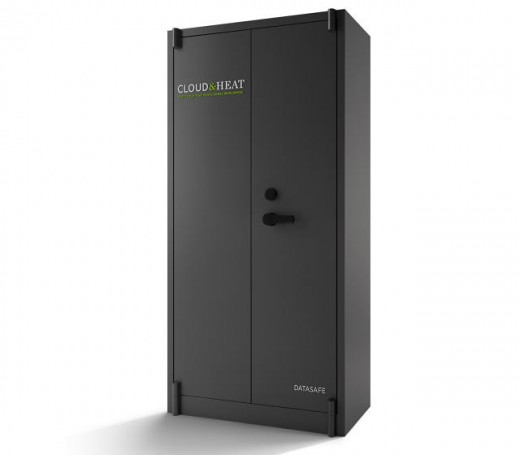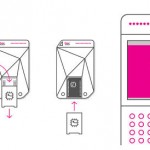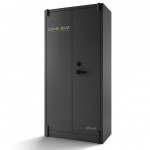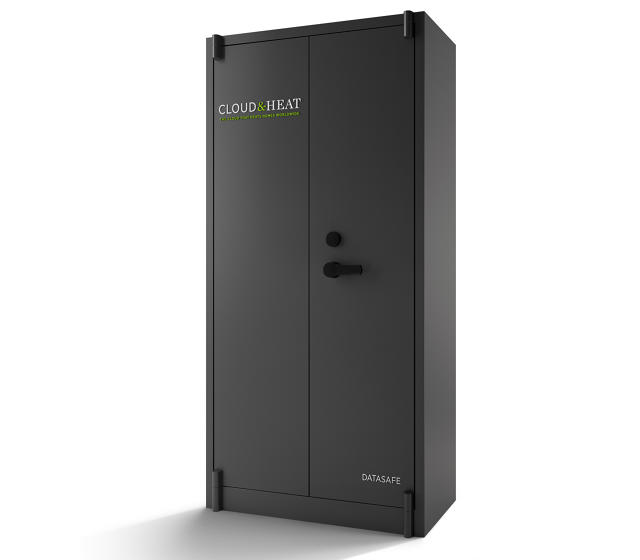The startup was inspired in part by another professor who happened to be building his own home near campus, and started wondering if it would be possible to send heat from the university data center to his house. “I said, ‘Well, bringing the heat to your house will be difficult,'” explains Struckmeier. “But bringing the data to the university, that’s easy to do. So why don’t we switch that idea and produce the heat in your house?” In a 2100-square foot house, a single server cabinet with 14 servers can heat the building and provide warm water. Any heat that isn’t needed right away is stored in a tank of hot water, or, if it’s summertime, vented outside. In a bigger building, servers can be combined with another heat source. “We’ve set up a system in a building in downtown Dresden with 56 apartments,” Struckmeier says. “With 20 heaters, we’re providing all of the warm water demand for the residents, plus some of the heat. A
local energy supplier provides peak demand in the winter with a district heating system.” For building owners, the cost of installation is about the same as a standard heating system—but then they get free heat and hot water. It also helps cut the carbon footprint of both the building and the servers. In a year, a single heater can save up to six tons of carbon dioxide. A full
distributed network of servers, with 760 server racks spread out over different apartment buildings and houses, can save the same amount of CO2 that a forest of 520,000 trees can absorb. The fireproof server cabinets can only be accessed by the company, so, at least in theory, data is as safe (or maybe safer, since it’s distributed) than at a typical
server farm. Despite the inconvenience of having to travel to each server cabinet for any repairs, the company says it still ends up being far cheaper than usual. “Of course, service people have to go to a server if there’s a problem,” says Struckmeier. “But we account for that by having redundancies in the servers. If a server fails, you don’t have to go there right away to replace it—we can go on a regular maintenance schedule. You don’t have the expense of running a data center building, which is significantly more.” Having distributed servers can actually also make
Internet service faster, he says. “It’s good to move the data to the people, because in the long term you can have the advantage of better response times. You can make your whole data center faster than a single data center that’s far away.” Though the heaters are only in Germany at the moment, the company’s
cloud services can be used anywhere. Cloud & Heat plans to eventually offer the heating service globally. “We think this idea makes sense in other places,” Struckmeier says. “We think we can use it all over the world.”












